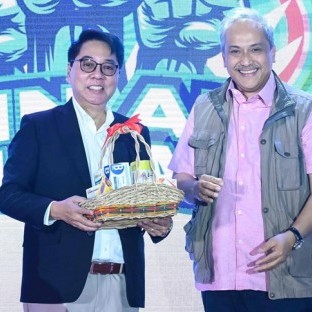RiteMed at 20: How a daring advocacy brand earned Filipinos’ trust
July 27, 2022

At a time when generic drugs were judged inferior, the company launched a series of powerful, advocacy-based campaigns that urged people to exercise their power to ask and choose
Originally published by Philippine Daily Inquirer / 09:00 AM July 12, 2022
Written by: Anne A. Jambora
It took courage to jump on an audacious mission where no pharmaceutical company has gone before. A mission-based business that is not afraid to innovate is what RiteMed is all about. It is anchored on service to Filipinos as only a Filipino company can sustainably do.
As RiteMed celebrates its 20th anniversary, it remains faithful to its roots—a company built from the ground up as an advocacy providing affordable, high-quality medicines for everyone.
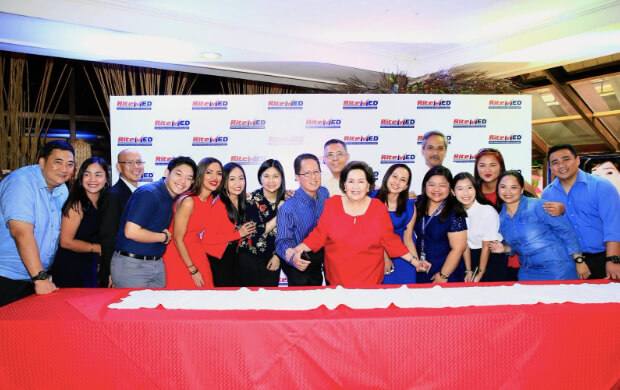
Susan Roces (center) will be remembered as the brand ambassador of RiteMed who left us with the famous one-liner, “Huwag mahihiyang magtanong.”
It is the pharmaceutical company behind powerful, heartfelt campaigns that resonated with Filipinos: “Bawal ang mahal!”, “May karapatan kang gumaling!”, “Dasal namin na gumaling kayo!”, “Huwag mahihiyang magtanong!”.
Smarts, hard work and Lady Luck catapulted RiteMed on top of the medicine choices hierarchy. In 2002, when generic drugs were judged “inferior, substandard quality” and “pang mahirap” by many, RiteMed was launched as a proudly generic company. It was a company launched on the basis of a campaign that was a radical idea at the time—that consumers can make a smart choice about the brand of medicine they need.
Cheaper Medicines Act
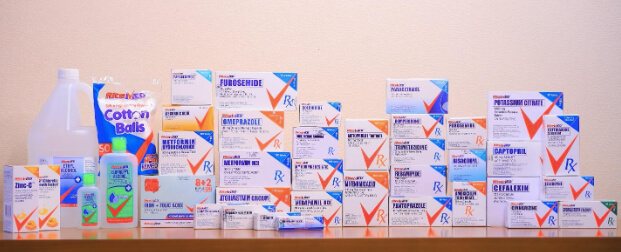
A brand built to last: On its 20th year, RiteMed vows to continuously source high-quality essential medicines to help Filipinos have access to more affordable medicines.
In 2002, then President Gloria Macapagal Arroyo asked the pharma industry for help in making available affordable drugs. Most pharmaceutical companies did not respond, with some even covertly opposing it.
Carlos C. Ejercito, then president of United Laboratories Inc., with the support of the company’s shareholders, was keen to help but knew it would be difficult to do so using conventional pharmaceutical marketing models.
“We had a situation then where the Generics Act of 1988 associated generics with ‘indigents’—and therefore inadvertently created the impression of inferiority, while sectors and forces interested in maintaining the status quo went on an aggressive campaign telling healthcare professionals that ‘generics are not the same as branded ones,’” said lawyer and chemical engineer Jose Maria “Joey” A. Ochave, president of RiteMed Phils. Inc.
The campaign was made more complicated because the Bureau of Food and Drugs at the time did not have enough resources to ensure that only good quality generics were able to enter the country. Bioequivalence was not required; plant audits of foreign companies to make sure they complied with Good Manufacturing Practices were limited, if they were done at all; and product testing of those available in the market was limited as well. It was therefore not surprising that, for a long time, generics were associated with ineffective medicines.
It was only during the Cheaper Medicines Act campaign in 2006, when then Health Secretary Francisco Duque III and Intellectual Property Office Director-General Adrian Cristobal Jr. explained that many of the well-known brands are, in fact, generic drugs, did the public understand that generics are not necessarily “inferior” if coming from a reputable company. In fact, most of the medicines used in developed countries like the United States, European Union, and Japan were already generic equivalents of the originator brands.
Brand-conscious
It also did not help that Filipinos, next to the Japanese, are the second most brand-conscious people in Asia. Hence, it would be difficult for a drug that only contains the generic name to find acceptance among doctors and patients. Early on, RiteMed realized four Herculean tasks—debunking myths, asking patients to exercise their right to choose, changing spending behaviors, and trusting the brand.
“We are in an industry where tiwala (trust) is important. To establish trust, the messenger is just as important as the message,” Ochave said.
Since it was extremely expensive to launch a portfolio of medicines where each medicine has a product brand, Ejercito thought of an unprecedented move: Launch one brand for all, regardless of molecules. No product brand, but use the corporate name instead to generate trust among doctors and patients.
“It was a high-risk decision,” Ochave said, “because if one product fails, the entire brand goes down with it.” That’s the reason such campaigns are unheard of.
“This is why we always make sure that we only have good quality products in RiteMed,” said Vincent Patrick Guerrero, RiteMed general manager.
Building trust
Establishing trust takes a long time, decades even. So RiteMed imposed strict internal regulations that are still enforced to this day. Everything is subject to audit from plant to product, each lot goes to the lab to be tested even if they come from manufacturing plants in Europe. All documents, especially bioequivalence and clinical data, must go through the company’s Medical Affairs, which is composed of specialist doctors.
RiteMed grew from 2002-2009 using the conventional pharma business model that utilizes the services of medical representatives to promote products to doctors. Then, in 2008, it faced a major challenge.
The Cheaper Medicines Act was enacted. It is a law that RiteMed fully supported because it inserted into the Philippine patent law public health flexibilities, which even the World Trade Organization recommended developing countries like the Philippines to insert in their laws.
However, it included a provision on Maximum Retail Price (MRP), which allowed the President to impose a price ceiling on selected drugs upon the recommendation of the Health Secretary.
In September 2009, President Arroyo imposed MRP on several products, almost all of them with huge sales. In 2010, the first full year of the MRP, RiteMed found itself swimming in red ink. For the first time in Philippine pharma history, the market registered a flat growth because of the impact of the MRP.
“RiteMed had to further reduce its already low prices to compete with the branded medicines whose prices were reduced by 50 percent as a result of the MRP,” Ochave said.
RiteMed had to change its business model after many of its employees were transferred to other United Laboratories marketing divisions, to prevent them from being retrenched.
With no medical representatives to promote its products, RiteMed adopted a new business model that focused on directly communicating with patients via media, to persuade them to ask for the RiteMed equivalent of molecules stated in their prescriptions. It was a novel business model which many said could not be done.
Brand ambassador
In late 2011, after a long search, RiteMed decided they needed a brand ambassador—one that Filipino mothers trusted, since 80 percent of healthcare decisions in Filipino households are made by the mother.
This is how veteran actress Susan Roces became the face of RiteMed. RiteMed then engaged the services of one of the country’s leading advertising gurus, Vince Pozon of Estima, to help them execute what they wanted—transform RiteMed into an advocacy brand, one that would aggressively champion the right of Filipino patients to have access to affordable and quality essential medicines.
RiteMed jump-started the campaign with “Bawal ang mahal!”, to challenge the then existing paradigm of “Bawal magkasakit dahil mahal magkasakit.” The message was simple and direct—quality medicines need not be expensive. The campaign targeted those who could barely afford medicines and yet still believed in the propaganda that branded medicines are inherently better.
“The Generics Act of 1988 was actually a brave move by then Health Secretary Alfredo R.A. Bengzon as there was then no widespread acceptance yet of generic medicines in the world. In the US, it was the pharmacists who pushed for generics because they were the ones who understood how pharmaceutical molecules work, how they behave inside the body, and how they react with other compounds,” Ochave said.
As luck would have it, Roces soon after had several television projects, and became a household name once again, cementing further her credibility among Filipinos.
Another stroke of luck happened when RiteMed’s main competitor encountered a manufacturing problem. This made drugstores nationwide push RiteMed every time a customer asked for generic choices.
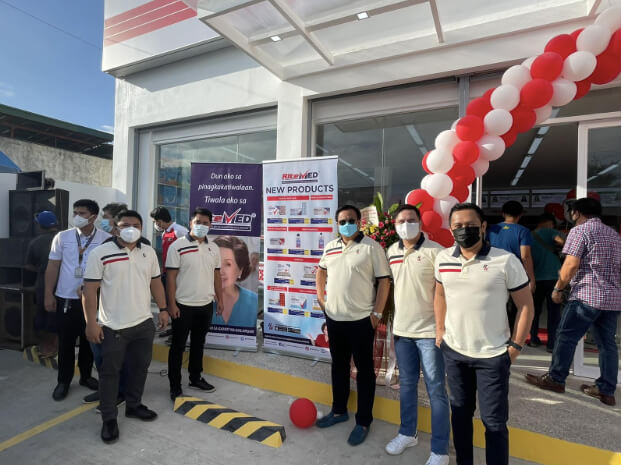
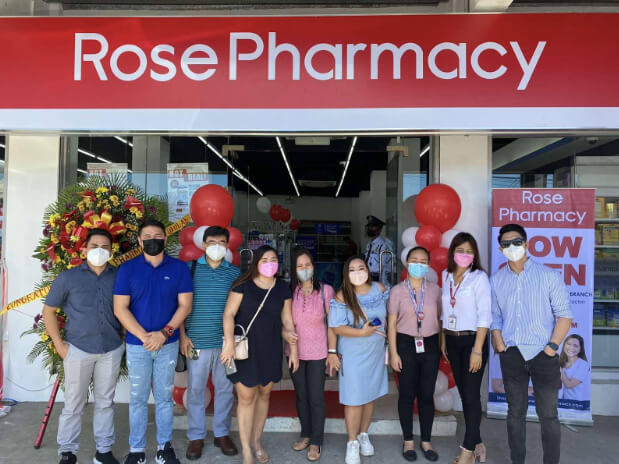
RiteMed is grateful to its trade partners for their sustained support for the past two decades.
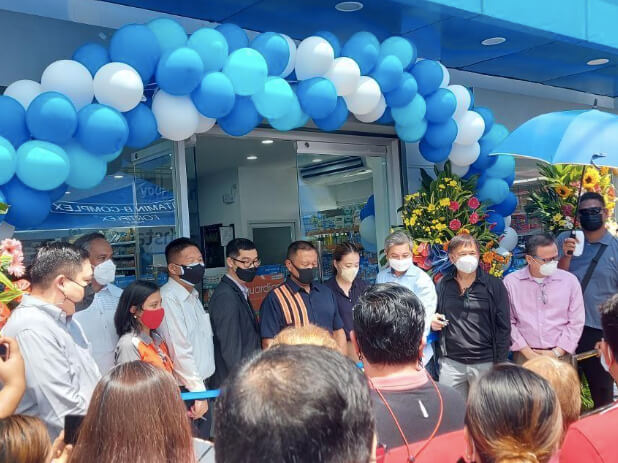
“We are indebted to our drugstore partners because at the time when we were down, they helped us despite our absence of prescriptions and brand exposure. Availability and visibility nationwide were critical and the drugstores early on believed in our promise that we would make available quality products at much lower prices,” Ochave said.
Landmark campaigns
After the “Bawal ang mahal!” campaign, RiteMed came out with “May karapatan kang gumaling!.” RiteMed thought it was about time to remind Filipinos that they have campaigned for a constitutional right to healthcare services and products—the right to affordable treatment options so they can get well.
Next came “Dasal namin na gumaling kayo,” a campaign that was influenced by RiteMed’s engagement with faith-based groups and studies showing that prayers do help in the healing process. It was also to underscore the message that medicines alone are not enough, that healing is multidimensional, which includes non-medical interventions. Studies after studies show that prayers and support by family and friends help hasten the healing process.
In 2015, another bold campaign struck a chord among Filipinos: “Huwag mahihiyang magtanong.” It aimed to make consumers speak out and inquire about a more affordable alternative, specifically RiteMed.
Studies showed that, ironically, those who could barely afford medicines were the ones most brand-loyal because they were embarrassed to ask doctors or drugstore sales clerks for cheaper alternatives. The campaign connected with consumers and went viral, with consumer-created videos being posted in YouTube, and celebrities like Vice Ganda mentioning it on their TV shows.
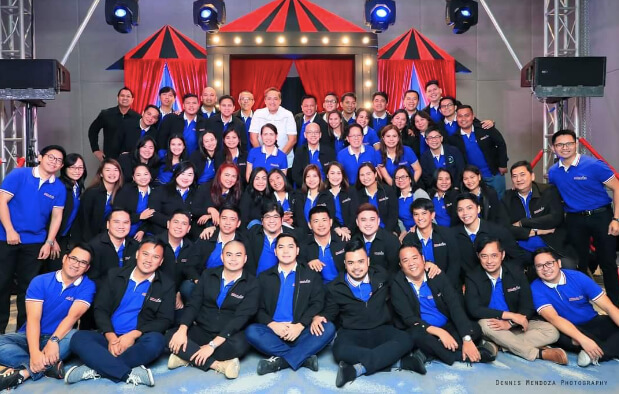
The no. 1 uni-branded line of medicines is composed of a lean and mean 49-person team.
“It seems counter-intuitive, the most brand-loyal are those who can barely afford. But it’s understandable—due to their limited resources, they don’t want to make a mistake. So they choose expensive brands, even if it means they can only buy a few capsules for their maintenance medicine,” said Guerrero.
Guerrero added that RiteMed has since expanded its chronic diseases medicine portfolio to meet the demands of the market. The sale of maintenance medicines now makes up more than 60 percent of its sales, with medicines for acute conditions making up 30 percent. The balance is comprised of OTC medicines, including vitamins.
“Providing an assortment of maintenance medicines is critical. These are the ones which are often sacrificed by patients because they could not sustain their purchase,” he said.
New look
RiteMed recently standardized their packaging, which now prominently displays the check mark. The check mark has been well-received and hopefully will be synonymous with RiteMed and quality.
The check mark would be Roces’ last campaign with RiteMed. (She died last May.) Unknown to many, she was hands-on in every campaign. She once turned down a campaign that she thought was too dark. She only campaigned for those she believed in. When she believed in the message, she would do anything, including sing and dance. She also visited the manufacturing facility where RiteMed is produced before she agreed to be its brand ambassador.
“In the future, we will be looking to grow our assortment of big and important maintenance medicines. We aim to provide an affordable alternative for every big medicine, especially the ones for chronic conditions,” Guerrero said.
“Aside from further strengthening our relationship with the pharmacists and drugstores, we have started to engage the doctors as well,” Ochave added. “Many of them use RiteMed products for themselves and their families. We hope that by engaging them, they will know that we have products other than those they are already using, and that we can have programs with them that will help ensure that their patients, regardless of economic stature, will have access to their constitutional right to healthcare products and services.
“We know it will not be easy, but we know that there are many like-minded people in the health sector who have the patient’s welfare as their utmost priority and we will work with them to realize this dream.”









